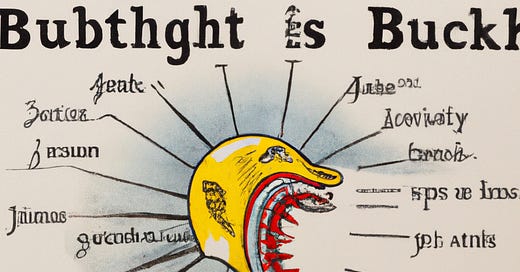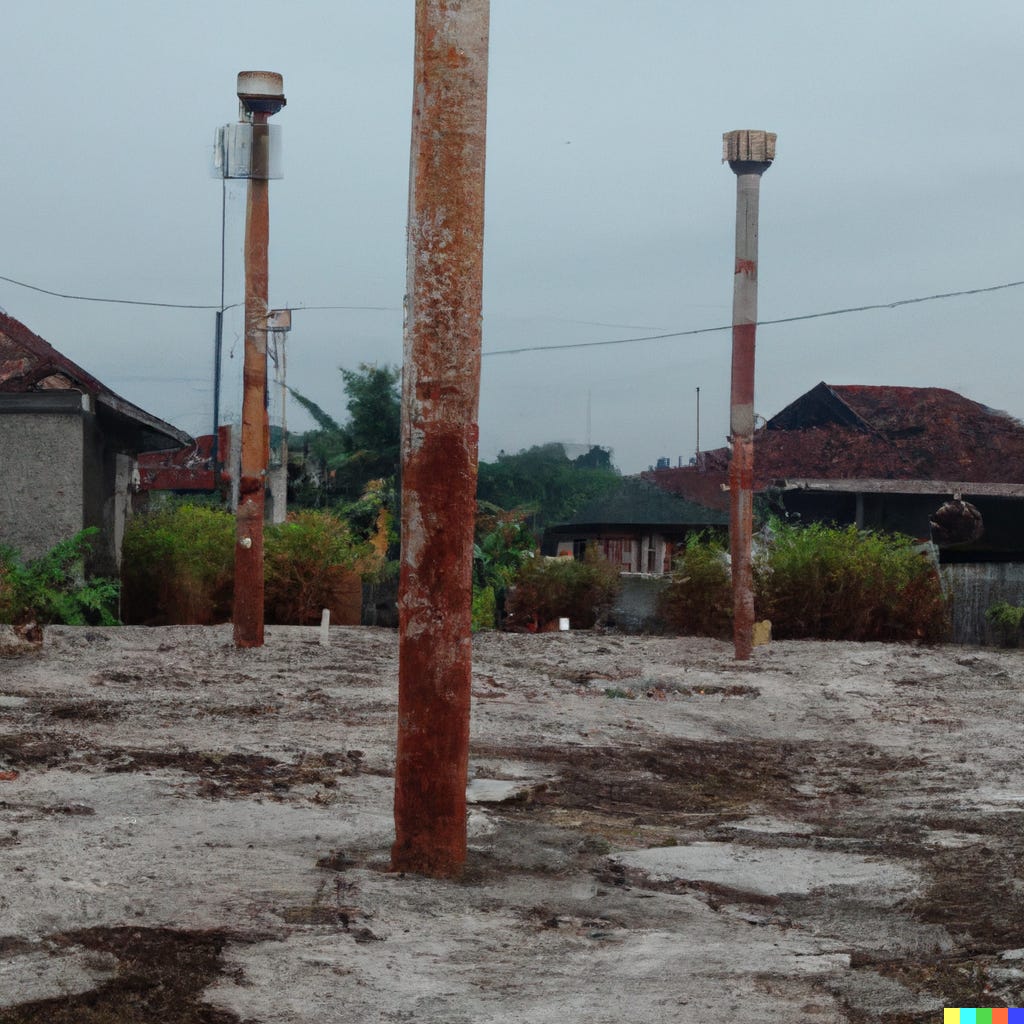A class / slashes / & a task
Poetry revision course / the mighty slash / a spooky writing challenge.
Class starts October 7!
I’m teaching a poetry revision mentorship course online through Seattle’s incredible Hugo House, nonprofit literary arts organization. Class starts October 7th.
It’ll be a nice slow burn—an asynchronous class you can complete according to your own schedule, with two weeks for each lesson/assignment (13 lessons over 26 weeks).
You’ll try out 13 approaches to revising your poems:
Finding the poem within a text
Identifying and describing what’s working and what isn’t
Finding the thesis of a poem
Expansion & contraction
Showing & telling
Consistency
Play
Building a bespoke geography
Incorporating a volta
Choosing a title
Being intentional
The course will include a lot of NEW nerdy poetry charts, plus I’m making helpful videos for each class, and students will get a lot of individualized feedback from me.
Punctuation: Slashes

A little while ago we looked at dashes: hypens ( - ), en-dashes ( – ), and em-dashes ( — ).
Today, let’s look at the wonderful slash, which can be backward ( \ ) but is most often forward ( / ). It’s a wonderful device for poetry—not quite a dash, nor a comma, nor a line break; not quite an “or” or an “and”—yet it can do the work of all of these and then some.
What a slash might bring to a poem:
A pause—it’s a visual cue to take a microsecond between words or phrases
A staccato or start-stop rhythm
A list vibe without the use of commas or line breaks or other tools normally used to show a list
Separation and separateness—isolating words, ideas, images
Uneven or upset breathing—try reading aloud a poem which uses a lot of slashes and you’ll find it’s not smooth sailing, lung-wise
Compartmentalization—rendering the bricks-and-mortar of a poem into modular things; pieces rather than an unbroken whole
Options—it’s a visual stand-in or representation of the concept of “or”
Attitude
In their book Already Knew You Were Coming, Sarah Nnenna Loveth Nwafor uses slashes liberally in a poem entitled “Bad [Definition: Daughter].” Here’s an excerpt:
spiteful / named a lie / said the truth / in a church / kissed girls kissed more / was not sorry for my / lips roughed red / and then purple / and then blue / like my heart / and my hair
To me, Nwafor’s poem offers a bit of “nanna-nanna boo-boo”—a poem version of sticking out one’s tongue at one’s oppressors. The “not sorry” and the emphasis on the small but stacked rebellions against a status quo, or against the expected/prevailing norms are enhanced by the slashes.
The presence of the slashes alters the way I read it, bringing forward a singsong quality and joyful power to my voice when I read it aloud. (But maybe that’s also just me identifying with the poem!).
Detachment / Horror
In her book Bless the Daughter Raised by a Voice in Her Head (2022), Warsan Shire uses slashes throughout her poem “Bless Our CCTV Star.” Here’s an excerpt from the poem:
Ma'am / is that your brother / being breastfed / by hooded goons / are those your brother's teeth / caught on speed cameras / eroding in real time / is that your brother's face / marred by pixelation /
In Shire’s poem, I find that the slashes insert a tone of official detachment, an air suitable to questioning from a police person, who is the presumed speaker. The slashes could even hint at a monotonous drone, as if the questions have been asked a hundred times before to a hundred other “ma’ams”.
Or/also, the slashes could imply something else entirely—the reception of the words in the listener—how the “ma’am” is receiving the meaning of the questions in a stuttering, earth-shaking, perhaps even horrified way.
Especially considering that the character of “ma’am” is likely watching the surveillance video while being questioned (and assuming this is upsetting and disturbing for her), the slashes help the reader imagine how the reality of this moment / these questions / this video is getting through to her consciousness in waves rather than in a steady stream.
Transformation
In his book NDN Coping Mechanisms (2019), Billy-Ray Belcourt. uses slashes in a poem called “Desire Made Waste Out of Time.” An excerpt:
[...] in a world fashioned by shame, the AIDS epidemic haunts queer poetry / listen: to be haunted isn't merely a psychologically fraught response to a past one has irrevocably and impossibly lost / haunting is a theory of ethics that posits one's non-sovereignty vis-à-vis the exteriority of the self / death by misrecognition is a problem for ethics, for example / haunting then, is a corrective to the heteronormative fetish of the individual / [...] Belcourt’s use of the slash here lends a helping hand to the prose-poem format. The precise, scholarly voice and academic style is ushered out of the prose world and into the poetry world in part through the help of the slashes. They interrupt the unfolding prose, allowing it to be parceled out; to have a more rhythmic aspect.
The slashes also offer an additive element, helping the poem feel like a cascading list, where each item builds on the one before it… ultimately forming a coherent argument, in the manner of academic writing, of course. But—transformed into a poem.
Visual Tools
In her book feeld (2018), Jos Charles employs unusual, inventive spelling and syntax, which serves to slow the reader down, and renders the poetry perhaps more physical than usual; the reader may need to resort to sounding out each word as they pick their way through. It’s unusual and adventurous—for the reader as well as the author.
Here’s an excerpt from a poem called “XL.”
ants inn the catheedril / as
pryvate as it gets / becums
a catheedril / a pynch with
inn demande / i was inn
love with a famyne / i was
inn love with the ded / i lyfted thees
usurous breasthes / [...]To me, Charles’ use of slashes here are more graphic than anything, allowing the poem to spread differently across the blank space of the page from how it might normally be expected to. The slashes seem to primarily act as stand-ins for line breaks.
*
In my own writing, I’ve used the slash to indicate separation of voices within a choir of anonymous characters who are speaking. Each slash indicates a different speaker. At one point, to hint at innumerable speakers, I line up a bajillion (forward and backward) slashes.
By that point in the manuscript, I’ve established the slash as a symbol referring to an individual life/voice/personhood, so typing many slashes together can then be a handy symbol for a crowd.
I would love to hear your thoughts about the humble/mighty slash and its roles in poetry – leave a comment below.
Spooky Writing Challenge (“task!”)
Task is a near-rhyme with class and slash, but as ever, here is your writing challenge or prompt!
Over the three years I’ve been writing this Substack, I’ve often used my own photographs and drawings to illustrate concepts. But I’ve also used images I created by prompting AI—and I’ve accidentally created a lot of AI-prompted images that were unsettling, weird, or fantastical—not useful for my immediate purposes, but striking.
This is October, so I invite you to write a spooky poem based on / inspired by one of the AI-generated images that follow (the caption for each contains the precise prompt I used, in case you’d like to include that in the poem). And there’s one more requirement for this challenge: incorporate slashes! Use forward or backward slashes (or both) in one of the ways we’ve discussed here—or in a totally different way.
I’d love to see what you come up with! Leave a comment or contact me directly.









